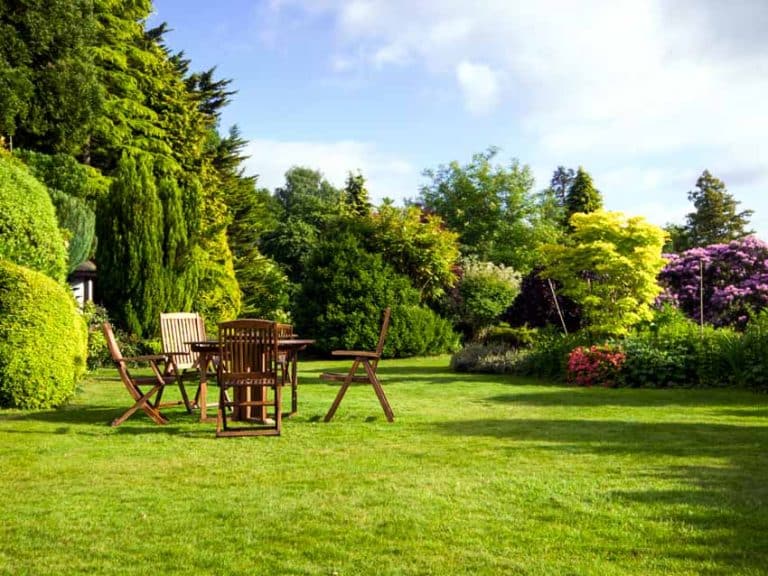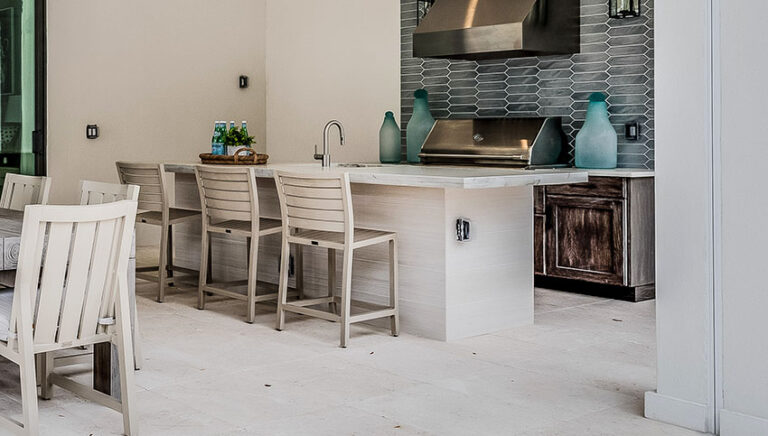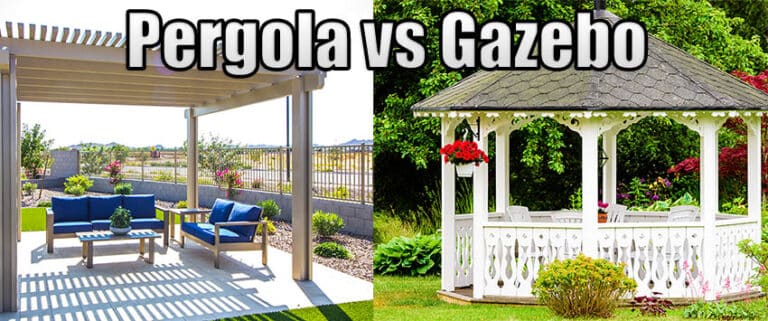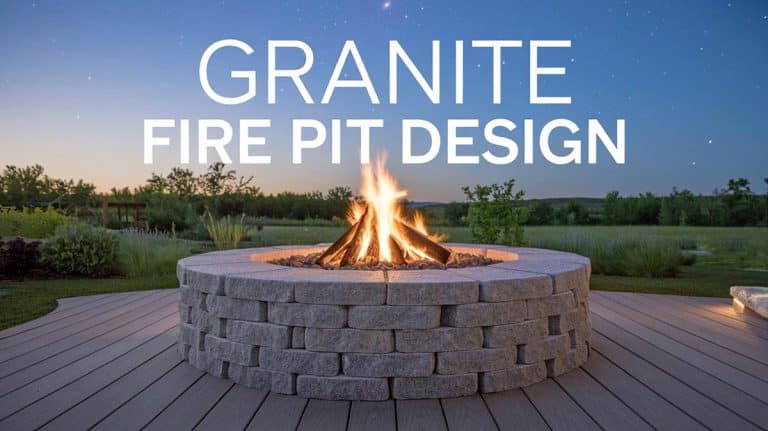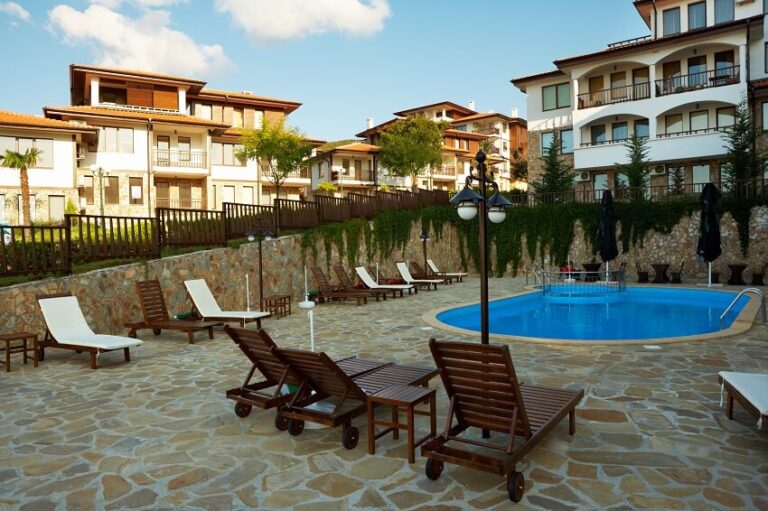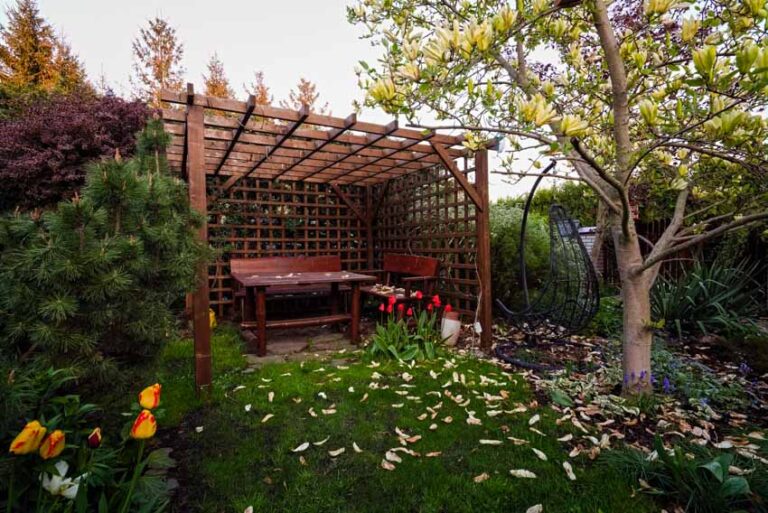Gorgeous Pergola Canopy Ideas (Pictures)
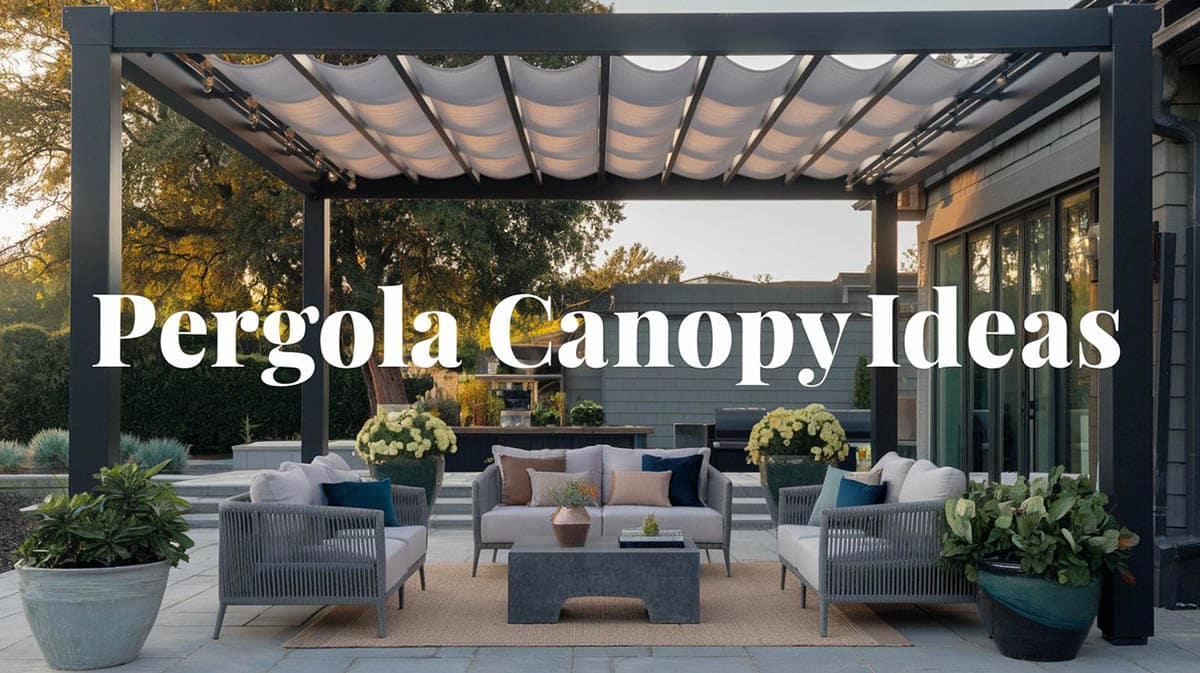
Pergolas are one of many architectural features that exist for both their function and their aesthetic. Functionally speaking, they help create an ‘additional space’ or extend your space outdoors, allowing you to have an additional area to your home that is directly connected to your garden/yard/outdoors. Depending on the type of pergola, it can also help provide shelter from the weather.
Aesthetically speaking, pergolas simply visually improve the overall look of your home. It can be made to match the house’s architectural style, or it can also be completely different, depending on the look you are going for. Check out our gallery of pergola ideas for even more designs.
In the picture above, solid wood posts and beams make up the main structure of this design, complementing the wood decking of the area it covers. The simple square silhouette gives it a contemporary appeal that would easily look good with any architectural style. A retractable canopy of white sunscreen fabric and side curtains has also been added for extra weather protection.
Pergola with Canopy
There are a variety of materials & applications for pergola canopies. Each has a different purpose/function, so you must select which type will work according to your requirements/needs. Here are some common pergola canopy materials:
Wood is usually applied as slats to provide shade from the su,n but provides little to no protection from the rain/snow. Wood lattice can be great to use as a frame for climbing vines.
Metal sheets are usually in the form of ling-span GI roof sheets- they provide the best weather protection but would be the last place in terms of aesthetics, as they take away the outdoorsy vibes of pergolas.
Plastic Sheets usually come in polycarbonate sheets (flat or corrugated). This material is flexible, so unlike wood and metal, you can easily create curved forms. It also provides almost as much weather protection as a GI sheet and comes in clear and many other colors. Its downside would be its longevity as it easily wears down when exposed to weather and might need constant replacement to keep it in mint condition.
Fabric is the most flexible option in all aspects. Depending on the fabric type you select, you can determine the percentage of sunlight that can pass through the fabric. Fabric can also be used in various ways and comes in many colors and textures. Weather protection depends on the fabric type used, but aesthetically, fabric canopies generally create the best looks.
Plants – A pergola can effectively support various climbing plants to provide shade and serenity. Popular plants to use for a pergola include Clematis, Rose, Honeysuckle, Jasmine, Passionflower, Wisteria, Grape vines, Bougainvillea, Ivy, and Trumpet vines.
Wooden Pergola with Canopy
Wooden framing is often favored for its natural look, blending easily with the outdoors/nature. Depending on the wood species used, it can also be expensive or affordable. Using the appropriate wood species according to the use/application and climate would greatly contribute to its longevity. However, the charm of wood-framed pergolas would be the naturally rustic vibe they achieve through normal wear and tear.
If you would like a bigger pergola, consider the limitations of your chosen material when designing. Retractable fabric canopies are often installed to soften the big & bulky wood used. You can also have a basic garden pergola with plants used as a canopy. Plants help block the sun from directly hitting you and instantly add more personality to your yard. The tops are crisscrossed battens that will serve as framing for the crawling vines. For the canopy covers, there are many different materials made for the outdoors, such as polyester, polyethylene, nylon, and vinyl.
White Pergola with Canopy
For pergolas, “the classic” would definitely be a simple all-white pergola. It adds rustic charm and romantic appeal to any space, giving it a chic yet laid-back feel. These can be made from metal painted white (or powder-coated), painted wood, or even plastic. Another option besides using traditional fabric is to use flat metal as slats, which are angled in a certain way so that light can still pass through, but still blocks the sun at the hottest time of the day.
On the exterior, Pergolas with GI roofing might not give the same Holiday aesthetic that other types do, but instead, they give you more flexibility in furnishing the space and even have the option to install electrical for outdoor TV watching and lighting safely.
Metal Pergola and Canopy
Metal is an excellent material choice for pergolas because of its flexibility (as a material and style-wise) and its sturdiness. With the right metal framing and appropriate finishing, a metal-framed structure can last you many years. It could be a bit expensive, but it won’t disappoint you regarding durability and style. As long as it’s safe, a fire pit pergola can create an enchanting ambiance with the right decor and accessories.
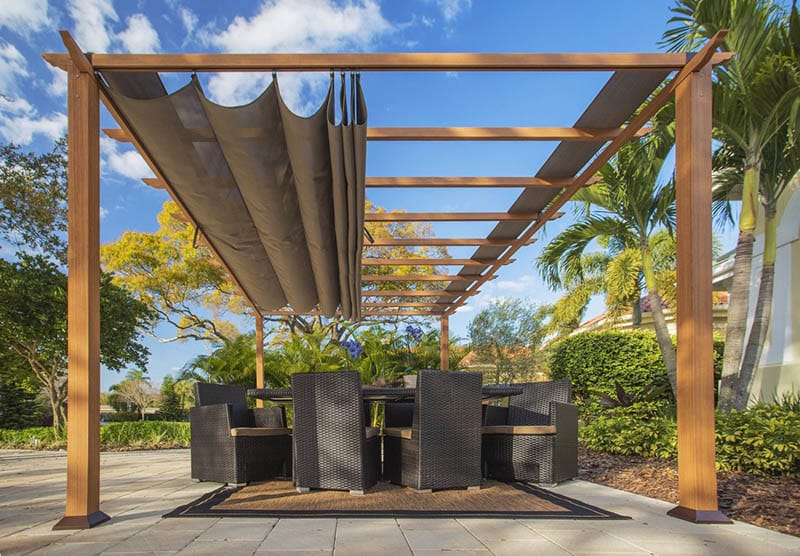
Aluminum can now be powder-coated to look like wood. This example of a DIY pergola uses a faux wood finish. The advantage of the metal used is that it uses less number of rafters, making it look light and very open.
DIY Pergola Canopy Ideas
With the advent of mass production, you can now easily buy DIY kits off the rack from your nearest building stores or even online. They are usually quite affordable and have many designs and sizes to choose from. However, customization is very limited, and the quality of the build is usually not as solid as custom-built ones.
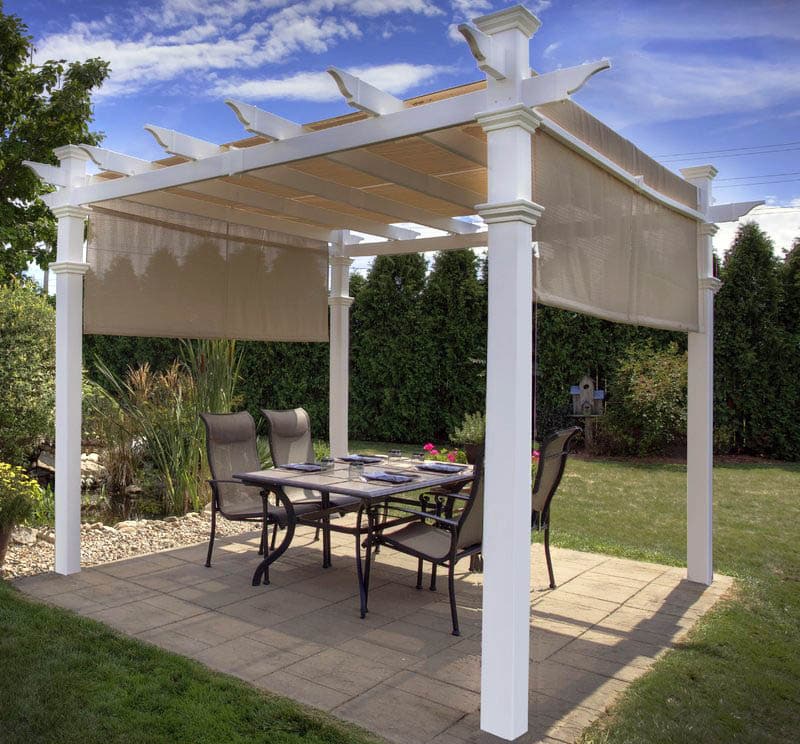
See this white vinyl shade structure kit at (Sponsored) Amazon
This easy-to-install pergola has a classic white frame and comes with a retractable fabric canopy, giving you a complete look.
Pergola with Retractable Canopy
There are also pergolas with retractable canopies. These types allow you to adjust the amount of sunlight passing through or simply allow you to “stow” or remove the canopy in case of extreme weather conditions like rains and strong winds.
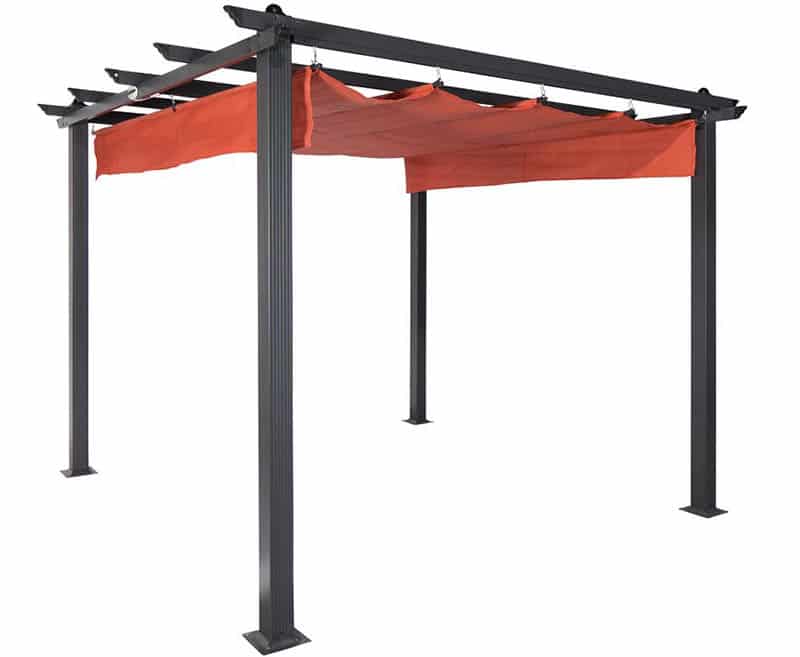
Metal shade structure with retractable canopy – See at (Sponsored) Amazon
This small DIY metal pergola comes with a canopy, making it a great value for money. It is hooked on the ground to give it more stability.
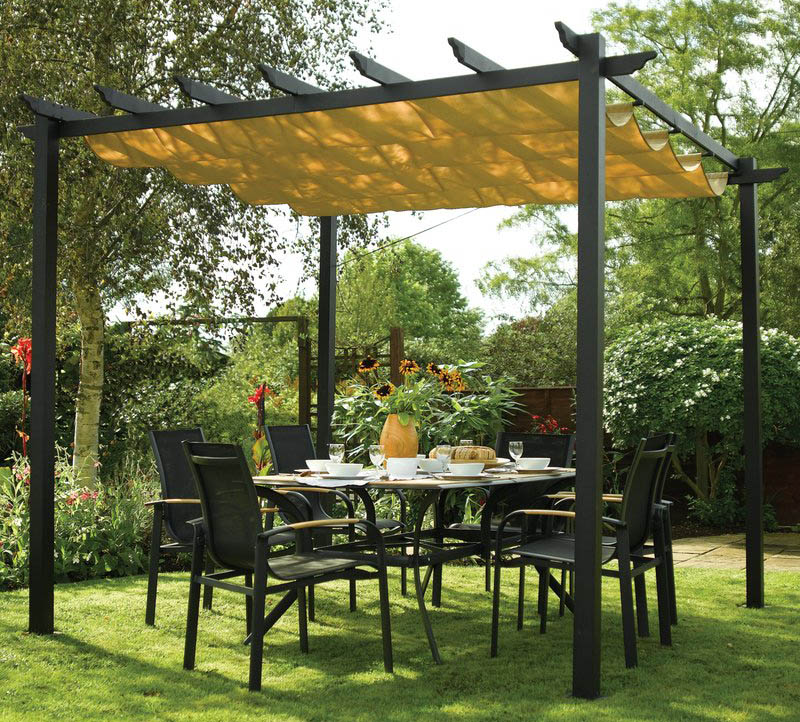
Freestanding canopy – See at (Sponsored) Amazon
Freestanding DIY pergolas uses slimmer columns, beams, and rafters, making it look light and very open. The yellow canopy gives this small design a bolder appeal. For more modern pergola designs visit this gallery page.

